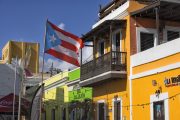The escalating violence along the Mexico-U.S. border has reached new levels of ferocity, as rival Mexican drug cartels battle each other and, simultaneously, wage war against Mexico’s federal, state, and local governments.
The opening weeks of 2010 brought incredible carnage to the streets of Mexico’s principal border towns. “A record 69 people were murdered across Mexico on Saturday [January 9], making it the deadliest day since President Felipe Calderon took office just over three years ago,” the Latin American Herald Tribune reported on January 13, citing Mexico’s El Universal newspaper. The previous daily death-toll record was 57 murders on August 17, 2009.
“The country resembled a grim, statistical dart board Saturday as law enforcement and media reported the deaths from various regions, including 26 in the border city of Ciudad Juarez, 13 in and around Mexico City and 10 in the northern city of Chihuahua,” the Associated Press reported on January 12.
The Latin American Herald Tribune article on the latest Mexican crime carnage noted:
El Universal, which keeps a running tally of the murders in the country, reported Sunday [January 10] that 283 people have been killed so far this year in Mexico…. Last year, according to El Universal, was the deadliest in Mexico in the past decade, with 7,724 people killed in violent incidents attributed to organized crime groups.
The spiraling vortex of violence is being driven by ongoing turf battles among Mexico’s competing drug cartels, which seem to be vying with one another to establish ever more gruesome displays of public assassination and torture. Decapitation, dismemberment, defacement, mutilation, hanging, burning — the ultra-violent methods keep evolving, as the cartels escalate their campaigns of terror and intimidation.
The recent murder-mutilation of 36-year-old Hugo Hernandez is a horrific illustration of the descent into barbarism on our border. Hernandez was kidnapped in the state of Sonora on January 2 and taken to the neighboring state of Sinaloa, apparently by rival cartel members. His body, cut into seven pieces, began showing up in separate locations. Lastly, his face was sliced off and stitched to a football. The grisly “trophy” was delivered to the city hall of the town of Los Mochis in Sinaloa.
This follows closely on the high-profile mass murder of the family of Mexican Marine hero Melquisedet Angulo Cordova. Cordova had been killed in the December 17 gun battle in Cuernavaca that also took the life of Arturo Beltran Leyva, known as the Mexican cartels’ “Boss of Bosses.” The young marine was given a hero’s burial with full military honors for sacrificing his life in the fight to bring down Mexico’s most wanted criminal. Hours later, his home was invaded and his family gunned down. Among the dead: his mother, brother, sister, and an aunt.
Before the month of January closed, Ciudad Juarez was the site of another atrocity: the mass murder of teenagers enjoying a combination birthday and high-school soccer victory party. The students, who reportedly had no known connections to gangs or drugs, were celebrating when several vehicles pulled up to the residence and as many as 15 gunmen got out and began shooting those who were outside the house. Then they moved inside and shot everyone in sight, as youngsters fled, or attempted to flee. When the shooting stopped, 14 victims lay dead, and another 14 were wounded, some seriously. Two of the wounded have since died, and other victims may also succumb to wounds sustained during the massacre.
On the same night as the party massacre, January 31, gunmen attacked a crowd reportedly composed mostly of college students in a bar in the city of Torreon, in the northern border state of Coahuila. Ten were left dead, 11 wounded. The following day in Torreon, six cartel gangsters and a federal policeman were killed in a running gun battle involving a convoy of cartel vehicles through the streets of Torreon’s busy shopping district.
“The narco-cartel violence continues unabated in Mexico, in fact, it’s going from bad to worse,” writes Allan Wall in a February 9, 2010 article for NewsWithViews.com. Wall, an American citizen who recently returned to the United States after residing many years in Mexico, grimly underscores the accelerating pace of the horrific drug-related violence along the border, noting, “As of February 3rd, 2010, the death count in the drug wars had already passed 1000. Yes, you read that right. In a little over a month 1015 had been killed. On average, that’s a killing every 48 minutes.”
Wall further notes:
In 2005, the 1000th death mark was reached on September 11th. In 2006 it was June 30th. In 2007 it was May 14th. In 2008 the 1000th death was reached on April 22nd. Last year, it was reached on February 20th. Now this year it was February 3rd.
You notice that it’s earlier each year. To put it another way, this year it’s only taken 34 days to kill as many people as were killed in a 254-day period in 2005.
Thus far in 2010, the day with the most killings was January 9th, in which 69 persons perished in the narco-carnage. On January 31st, 57 were killed, on the 20th it was 53, on the 12th it was 44 and on February 3rd it was 25 killed. On January 1st, New Year’s Day, 37 were killed.
Bordering on Bedlam
Mexico’s narco-terror doesn’t stop at the Rio Grande; the drug cartels’ ultra-violent methods have made their way onto the streets of America, where a network of literally hundreds of thousands of Mexican gang members operate, often with near impunity, in the “hoods” of Los Angeles, Phoenix, Houston, Atlanta, San Diego, Fresno, and dozens of other cities throughout the United States.
According to the FBI, “About 20,000 violent street gangs, motorcycle gangs, and prison gangs with approximately 1 million members are criminally active in the U.S. today.” A large percentage of those gangs and gang members is affiliated with, and is subservient to, the two major rival Mexican gangs, the Mexican Mafia and Nuestra Familia.
Figures from the U.S. Immigration and Customs Enforcement (ICE) show that of the 6,559 violent gang members arrested by ICE from 2005-2007, the vast majority (76 percent) came from just two countries — Mexico and El Salvador. The notoriously violent El Salvadoran gang Mara Salvatrucha (also known as MS-13) gives allegiance to the Mexican Mafia, so it can be considered, in effect, a Mexican gang. These gangs constitute a foreign occupying army in many of our communities. And the frightful havoc being wrought south of our border provides a glimpse of what we can expect to unfold here if they are allowed to prosper with impunity and to continue bringing in new recruits.
Simply locking up more of them in prison is not the answer; the Mexican Mafia already has too much power over much of the prison system in California. A recent investigative report by San Diego’s Channel 10 television station lends support to charges that the top Mexican Mafia members incarcerated in some California jails and prisons not only run criminal operations on the street from their jail cells, but also virtually “run” the prisons as well. Reports by Channel 10 on February 8 and 9 of this year focused on “Andrea,” a highly placed member of the Mexican Mafia who became an informant for the FBI. Andrea, who helped take down some of the top Mexican Mafia kingpins, says she ran many of the prisons for the gang leaders, paying huge sums to crooked guards, bail bondsmen, and lawyers, who would smuggle drugs and other contraband in to the imprisoned gangsters, as well as deliver their orders to gang lieutenants on the outside.
Continuing the Bush Fiasco
President George W. Bush angered many Americans with his persistent efforts to enact an amnesty for the millions of illegal aliens residing in the United States, his refusal to adequately staff the Border Patrol, and his Justice Department’s outrageous prosecution of Border Patrol Agents Ignacio Ramos and Jose Compean. Not much has changed. President Obama is pushing for amnesty again. And in his fiscal year 2011 budget submitted to Congress on February 1, he proposes to cut the already undermanned Border Patrol’s force size by 180 officers, and discontinue construction on the 900-mile border fence mandated by the Secure Fence Act of 2006.
Moreover, as reported by KGNS-TV Channel 8 in Laredo, Texas, President Obama’s Census Director, Robert Groves, seems to be going way out of his way to throw out the welcome mat to entice more illegal aliens to cross into the United States. In a February 1 story, Channel 8 reported on Groves’ visit, along with Rep. Henry Cuellar (D-Texas), to the impoverished Laredo “colonia” of San Carlos, where illegal aliens have settled. The Census Director assured the colonia residents that they needn’t fear the census because “we are not going to share this information” with immigration -authorities.
“We want to count you and your family so you can benefit from the services,” Groves told the illegal residents. And, according to Groves, “there are four hundred billion dollars in taxpayer money that will go back to the communities if everyone is counted.”
Now, $400 billion is not mere chump change, even in an outsized Obama budget, and it will certainly not take long for that message to work its way through the grapevine to many others south of the border who are contemplating the trek north.
In fact, many of them may actually end up working for the Census Bureau. Economic times are so tough that the Obama administration is cutting 180 Border Patrol agents, but the Census Bureau informs us that it is hiring “hundreds of thousands of temporary workers.” According to the Bureau’s website:
For 2010, the Census Bureau is hiring hundreds of thousands of temporary workers to fill a variety of census positions across the country. Area residents can apply to earn good weekly pay, enjoy flexible hours and be part of a historic opportunity to serve their communities.
“United States citizens will be given preference for census jobs,” says the Census Bureau employment application. “However,” it continues, “noncitizens may be considered if qualified citizens are not available, particularly in areas where bilingual ability is a necessary qualification.”
Surely there will be rigorous screening of applicants, you may be thinking. Not likely, since we do not even have credible screening of the far more sensitive positions of Customs and Border Protection (CBP) officers. The past few months have seen a number of arrests of CBP officers who had infiltrated the agency as agents of the drug cartels. “We are very concerned,” James Tomsheck, the assistant commissioner for internal affairs at CPB, said in December. “There have been verifiable instances where people were directed to CBP to apply for positions only for the purpose of enhancing the goals of criminal organizations. They had been selected because they had no criminal record; a background investigation would not develop derogatory information.”
While the narco-violence and bedlam along our border continue to escalate, too many Democrat and Republican politicians continue to play the pro-amnesty “comprehensive immigration reform” game, jeopardizing the safety of our communities as well as our national security. Voters will have an opportunity to “deport” them from office in November.




